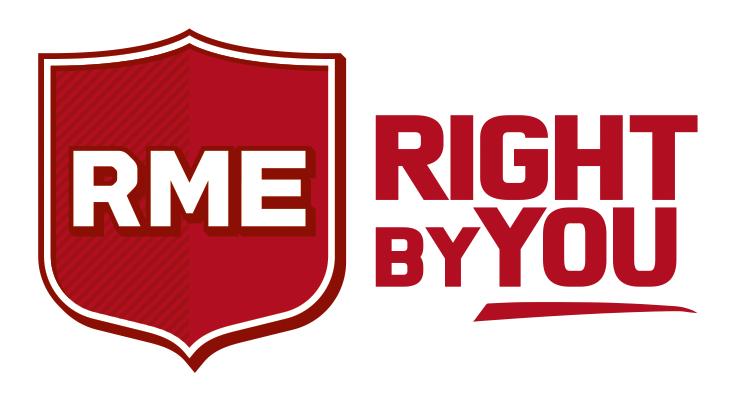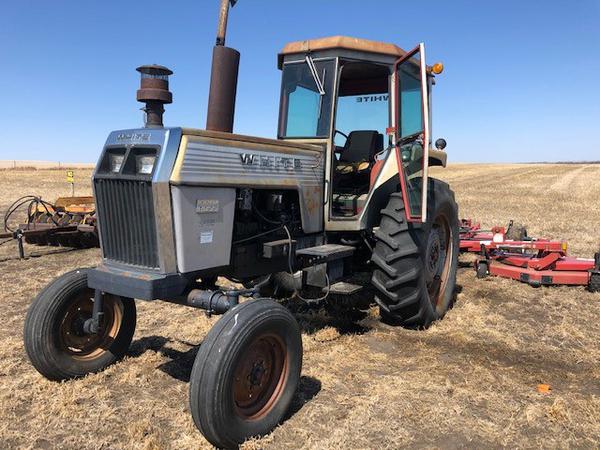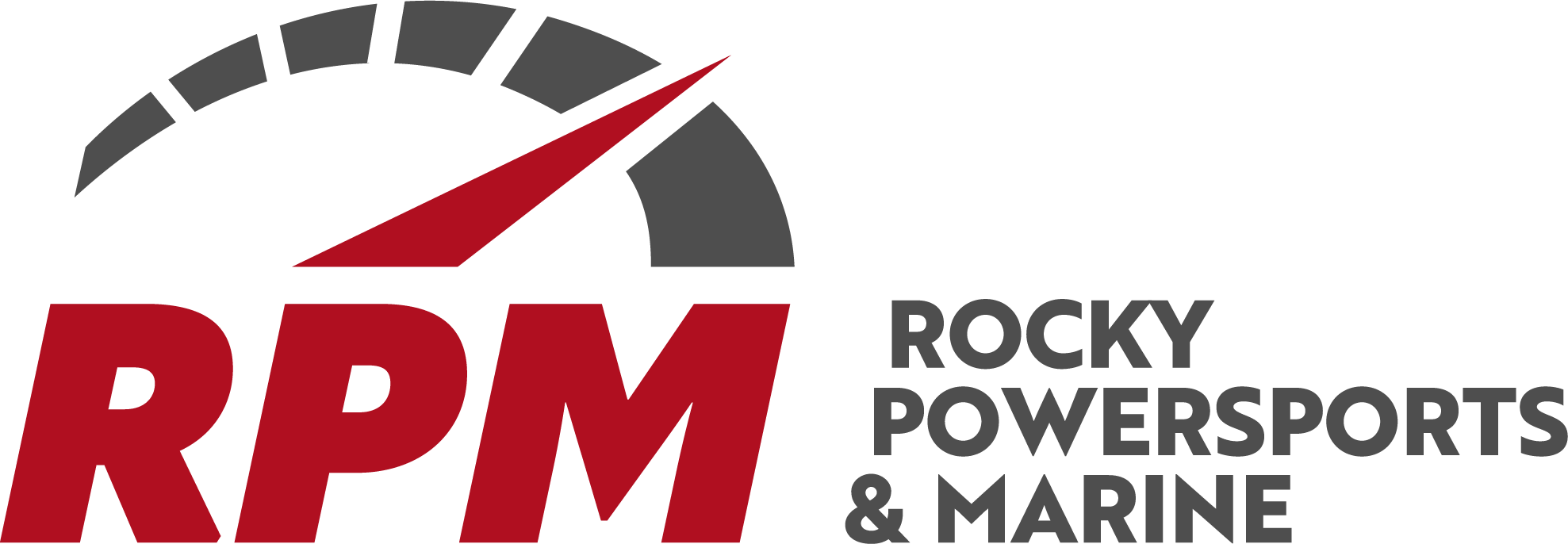Register an account with RME to store your favorite equipment and easily compare between units.
RegisterVOLUME 44 · NUMBER 06 · MARCH 6, 2018 · $4.25 · Practical production tips for the prairie farmer · www.grainews.ca
Official article excerpt: From (Grainews: New Trimble technology helps manage water, March 6, 2018)
LAND MANAGEMENT NEW TRIMBLE TECHNOLOGY HELPS MANAGE WATER
GPS-guided dozer blades can help contour fields prone to ponding and flooding.
By Lee Hart // Field Editor
After a widely-felt dry year like 2017, many western Canadian producers aren’t likely concerned about too much moisture, but the fact is not all areas were dry last year. And the reality also is most producers can remember in the not too distant past growing seasons, that standing and ponded water on cropland was a concern.
Don Neufeld of southwest Manitoba and Randy Pidsadowski who farms north of Edmonton are familiar with cropland water issues. They are working with new technology from Trimble to help contour farmland so ponding water isn’t an issue. They aren’t draining swampland, but correcting slope or levelling out low spots with pull-type blades behind the tractor, aided by GPS guidance systems, and Trimble software. It is high-tech stuff, but both producers say it is quite easy to use, and as a real bonus, it does what it is supposed to do.
And as with most good things in life that aren’t free, or necessarily cheap, they figure the $45,000-plus cost for the Trimble technology is a good investment. They are able to farm more acres — in wet years they hopefully won’t have 10 to 20 per cent of acres not seeded, or alternately they won’t be spending $200 per acre on inputs on areas of fields that later drown out.
And equipment efficiency is another benefit. If they can cover more acres in a day with machinery that has an operating value of about $300 per hour, that’s a savings too. Neufeld estimates on one half section where levelling and contouring eliminated standing water, it reduced all field operations — seeding, spraying, fertilizing, swathing and combining — by 27 to 30 hours —which is worth about $9,000 in equipment time costs, in just one year. These producers are expecting a payback through increased productivity in one to three growing seasons.
Don Neufeld – Kola, Manitoba
Don Neufeld has been using field contouring technology on his southwest Manitoba farm for the past couple of years and he still can’t believe how easy and how “smart” the system is for removing those low-lying areas long prone to flooding and ponding water.It is not quite as simple as plug in and go, but pretty close, says Neufeld who along with family members crops about 4,000 acres of grains, oilseed and pulse crops near Kola, Man. (that’s a small community west of Virden along the Saskatchewan border — some of Neufeld’s farmland is in Saskatchewan).
Learning the system involved a couple-hour tutorial with specialists with Rocky Mountain Equipment (RME) to demonstrate how the Trimble field-levelling technology worked. Basic steps involved mounting an RTK GPS tower (tripod) in the field, mounting a Trimble imaging Rover (sensor) on the top edge of the levelling tool (in this case a 24-foot pull dozer blade), programing software so over a given field, for example, he wanted to create eight inches of slope on a quarter section, select auto steer on the tractor and away you go.
“Until you actually see how it works, it is hard to believe how easily the system works,” says Neufeld. “Basically you just program in the degree of slope you want and the system takes over adjusting the level of your blade as you go. And you end up with this nice level contoured surface you could drive over with a NASCAR.”
Neufeld, working with Steve Gillis, a technology specialist with RME, was actually involved in a pilot demonstration of the Trimble land-levelling technology. He first treated a quarter section of cropland along Pipestone Creek on his Saskatchewan farmland. When using the land-levelling equipment he obtains the necessary permits required from provincial water management jurisdictions in Saskatchewan and Manitoba.
“This one quarter section had about 17 areas where water would pond,” says Neufeld. “I’ve been farming in this area since I was 16. At one time, years ago we would get half an inch of rain over 12 hours, but in more recent years we are getting three inches in about 10 minutes. The land has a hard time handling that, and if you have any low areas the water just sits.
”Neufeld programmed the Trimble technology to create eight inches of slope over a half-mile. He has some fields where there are just natural water runs where he wants to improve the contour. On this quarter section that sloped toward the river he worked over the full 160 acres. The Trimble Rover sensor was mounted on the top edge of a 24-foot-wide pull dozer, which he pulled with a Case IH Steiger 620 Quadtrac tractor. He made one pass over the area to be treated, with the dozer blade off the ground. That allows the Rover sensor to take a survey or a “read” of the field geography.
Neufeld enters the design or degree of slope he wants over the area on the in-cab Trimble monitor, and then presses Install. With the auto steer activated, once he puts the tractor in gear the technology did the rest. It took about 19 hours of field time to create the desired slope over the quarter section. And during the process, he does have the opportunity to make manual adjustments. Farming in an area where topsoil is a precious commodity he doesn’t want cuts made too deep to expose the white clay underneath. In places he used the tractor bucket to scrape a bit of topsoil from other areas to make a fill.
“It is just amazing to see how and how well the system works,” he says. “I could have gone out there with a blade myself and tried to fix up a few areas more or less by guesswork.” Neufeld, who has been around the construction industry most of his life, says he thought he had a pretty good eye for reading levels, but the Trimble software had a much better read and accurately adjusted the operation of the blade making the necessary cuts and fills to create a proper contour or slope. “It probably reduced my time by 75 per cent if I had tried doing this just on my own, and it did a better job,” he says.
On that quarter section, in particular, he says he eliminated the 17 low- lying areas where water would pond and now he’s able to crop 156 out of 160 acres. Also, improving the contour doesn’t mean water just rushes to the edge of the field and off into the river or neighbouring fields. “I believe creating that more even slope actually improves moisture conservation,” says Neufeld. “Water has more chance to percolate into the soil over a wider area.”
Neufeld says it is best to do levelling when ground conditions are dry. He’s done about one-third of his own farm as well as rented acres and says it can be used on any project where he needs to create a grade — a roadway, or even creating three inches of slope over 3,000 feet of a grain bin yard, for example. He even did some grade work for a local airstrip.
Randy Pidsadowski – Pibrock, Alberta.
Cropland contouring won’t change the weather, but Randy Pidsadowski is hoping improving natural watercourses on his Edmonton-area farm will allow him to crop more acres when he does catch a weather break.
He wasn’t able to seed about 15 per cent of his grain and oilseed farm at Pibrock, north of Edmonton in 2017 due to wet conditions, and more rain during the growing season only allowed him to get about half of what he did get planted harvested.
So over the past fall of 2017 and early winter of 2018 he’s spent about 100 hours so far with GPS and a Trimble land-levelling system improving water runs on his fields hoping to seed more acres this coming spring.
“Our farm has undulating geography,” he says. “We have some hills and then some low areas and flat spots. We have some natural watercourse areas where water moves and collects so my hope with this equipment is to improve the contour through these areas so the water moves off the fields.” Pidsadowski wants to improve natural water flow while minimizing soil disturbance.
Over the past five years he has been looking for and trying a few approaches to improve water flow off the fields. He has used a dozer blade on the tractor and borrowed scrapers but it was slow work and in some respects hit and miss whether he was creating the proper contours. After talking to his local Rocky Mountain Equipment dealer and watching a demo on water management options, he opted for the Trimble land-levelling system. Along with that he also bought the second most important piece of the puzzle — a Bridgeview transformer blade. The Saskatchewan-built land-levelling tool has a rigid centre section but hydraulically controlled wings on each side, not only for easy transport, but they can also be adjusted to create more of a trough-type pattern when contouring areas of a field.
“I just wanted to improve the natural watercourses in the field,” says Pidsadowski. “Depending on the field, a quarter could have anywhere from one to a dozen of these watercourses.” In most cases improving the contour or flow involved scraping off about four to five inches of soil for 200 to 300 feet just so water can keep moving.
With support from RME, Pidsadowski set up an RTK GPS tower in a field and mounted the Trimble Rover sensor on the transformer blade. The monitor/controller for the system plugs into the quadtrac tractor console in the tractor cab. He made a driving pass over the area he wanted to contour so the Rover could make a survey. He entered the degree of slope or cut he wanted to make into the Trimble controller, pressed Install and was ready to go.
“A nice feature of the system too is that you can program it to make a four-inch cut, for example, but then scrape it taking off an inch at a time, just to see how it is looking,” he says. “The system is very easy to work with, and very precise too.
”Buying the equipment in late 2017, Pidsadowski had already used it on about a dozen fields by early 2018. He even found on early- winter days, with no snow on the ground, the equipment worked quite well even when the top layer of soil was frozen.
“I’m pretty happy with how the whole thing works,” says Pidsadowski. “It’s easy to use, very accurate and still leaves you in control of how much dirt you want to move. On our farm I am just trying to improve the natural movement of water and not trying to create something new and push water where it doesn’t want to go.”
– GRAINEWS.CA / MARCH 6, 2018 // RME Featured
Download the article here!
Available in Adobe PDF format.





